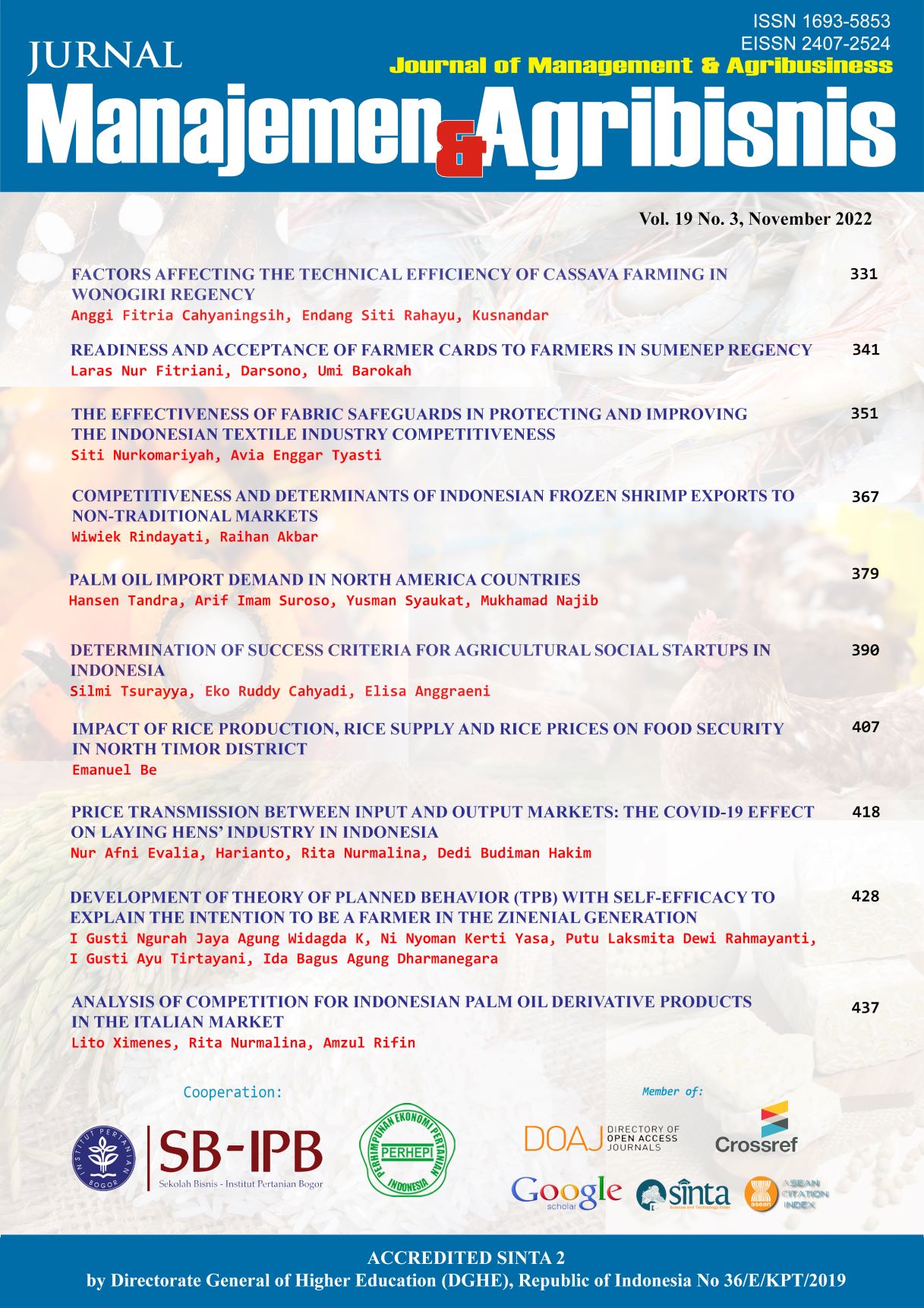Added Value of Soybean Into Tempeh Chips in Kedungjenar Home Industry Centre, Blora Regency
Abstract
The study aims to describe the characteristics of the home industry, analyze the income of the home industry, and analyze the added value of soybeans from primary products (soybeans) into processed products of tempeh chips. The research was conducted in Kedungjenar Home Industry Centre, Blora Regency, Central Java. The research method used was the census method by sampling saturated with 14 home industries of tempeh chips that process tempeh chips from soybeans as samples. Data were collected by observation and interview with a structured questionnaire. The analytical method used was descriptive analysis, cost analysis, revenue analysis, income analysis, and Hayami's added value analysis. Results showed that the characteristic of the tempeh chips home industry consist of the status is the main business, raw materials are obtained from shops, capital is personal fully funded, and an average labor of 4 people. The total revenue and income of tempeh processing are IDR8,160,000/month and IDR3,556.045/month, respectively. While tempeh chips are IDR21,133,000/month and IDR12,115,779/month, respectively. The added value of tempeh is IDR 16,130/month while the added value of tempeh chips is IDR20,990/month. Therefore, the added value of tempeh chips is greater than the added value of tempeh. The added value ratio for tempeh chips is classified as high (ratio > 40%) and is feasible to work on.
Keywords: Hayami method, income, production cost, profit, revenue
Authors
Authors who publish with this journal agree to the following terms:
- Authors retain copyright and grant the journal right of first publication with the work simultaneously licensed under a Creative Commons Attribution License that allows others to share the work with an acknowledgement of the work's authorship and initial publication in this journal.
- Authors are able to enter into separate, additional contractual arrangements for the non-exclusive distribution of the journal's published version of the work (e.g., post it to an institutional repository or publish it in a book), with an acknowledgement of its initial publication in this journal.
- Authors are permitted and encouraged to post their work online (e.g., in institutional repositories or on their website) prior to and during the submission process, as it can lead to productive exchanges, as well as earlier and greater citation of published work (See The Effect of Open Access).

